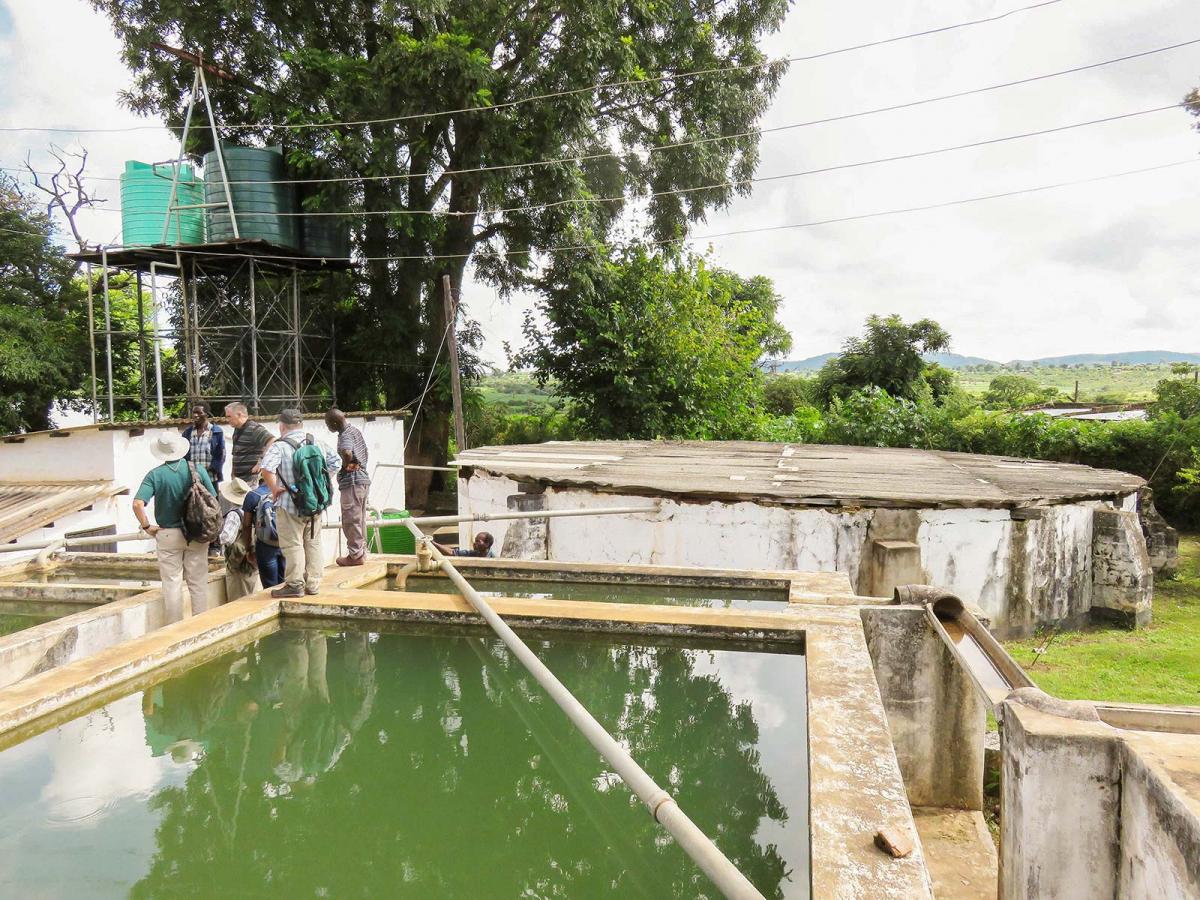“When the white men came, their vision was to reach the Zambian people in the remote areas, building a hospital and a secondary school. The vision is still here, but we cannot do this on our own. When the white man left, there was a gap to fill.” This is how Lt. Col. Frazer Chalwe, the Salvation Army Director of the Chikankata hospital and mission station, summed up the challenge EMI had come to help him face. Our EMI team of engineers and planners were at Chikankata to assess its reservoir, water supply system, and other infrastructure. As I walked through the 70-year-old, 225-acre mission station over the next several days, people often called out from their front porches and gates, “How is the dam?” To the 2000 people living, working, and going to school there, the reservoir and the dam were one and the same. Water supply on the campus was dwindling, and we were told that “the dam” was the problem. But in reality, failing infrastructure on the campus was an outward sign of the more complex challenges the Salvation Army mission is trying to solve.

“The whole design was by a missionary, not a Zambian,” said Lt. Col. Chalwe, “Going deep into the interior was not easy. The vision of 1947 is still here. Now EMI has come to do the research to match the times we are in now.” During those days walking over the campus, I was amazed by the enormous vision that had founded such a campus in the heart of rural Zambia, a campus that was now crumbling all around. On the Zambian side, sustaining this missionary design has far overtaxed their much more limited resources. Plenty has been written in the world of missionary outreach and international relief & development that chronicles the pitfalls of Western dependency. When the West mobilizes vast resources to meet international needs, it often defeats local initiative. And in many places, the work of the church is connected to a history of colonial domination. So there are breakdowns when the time comes for mission and vision transfer, when the scale and source of resources changes, when local partners become owners and stewards.

"We need renewed missionary vision to carry us farther." Chalwe told me. All over the developing world, there are men and women of God who are grappling with a vision to minister to their own people and communities, just like Chalwe. Yet this is a man who has spent 28 years of his life serving in ministry with the Salvation Army, most of that time with little resources and lately with rolling electricity blackouts. Labouring under the tremendous weight of the challenges faced by the local Zambian church, he constantly works through compounding difficulties we usually don’t see or understand. All this is on top of personal tragedy and loss: at the time of our visit, Chalwe had recently returned from the funeral of his father-in-law. His wife passed away just weeks after our team departed. And yet he presses on. And so EMI comes in the role of a servant, to undergird and lift up the arms of leaders like Chalwe. We affirm and encourage him as inheritor and carrier of the missionary vision of 1947. We whole-heartedly embrace our role as behind-the-scenes partners, bringing only the resources missing from the local Body of Christ—not to lead but to serve. It is practical help—like redefining the problem with the dam as broken water distribution facilities—that equips these leaders to meet the challenges of their time. This is only the beginning of a long process of partnership with the Zambians of Chikankata Mission to help them close the gap. And restored water flow to the mission will be an outward sign of a renewed missionary vision.

 Director of EMI Nicaragua
Director of EMI Nicaragua